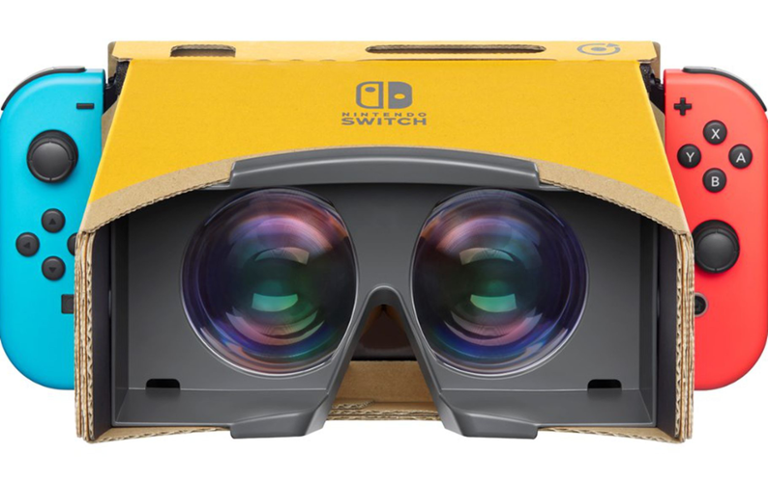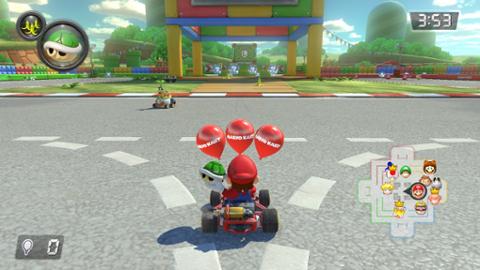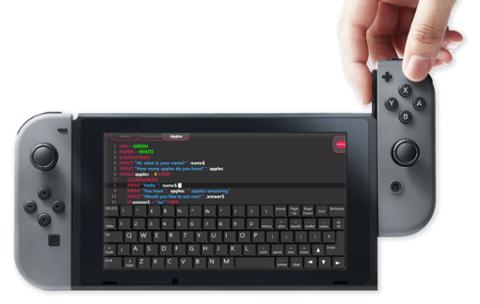Nintendo Switch Kickstarts VR With New Labo Kit (But Should Devs Care?)
The Nintendo Switch is a fun console with massive third-party support. Nintendo's newly released virtual reality (VR) Labo kit may get developers even more excited. Labo is Nintendo’s DIY platform that allows gamers to make peripherals out of cardboard. The idea is that folding your own cardboard accessories bridges the real and digital worlds together; you could make a proper wheel-and-pedal setup for use with "Mario Kart," for instance, and feel like you’re actually driving. The finished kits are dubbed ‘toy-cons,’ a play on Nintendo Switch’s dual ‘joy-con’ controllers. The VR Labo Kit comes in several varieties, but the basic set has a toy-con VR headset and a larger ’blaster’ attachment that will remind the olds (like me) of Nintendo’s original NES gun. There are also two expansion packs, each with two toy-cons: the first has a bird and a ‘wind pedal’ you step on, and the second is a camera along with an ‘elephant’ VR kit that essentially puts a trunk on the end of the VR goggles. These VR expansion packs for the Switch Labo kit seem like unique offerings for a flying game and some sort of safari interface. Interestingly, the basic VR headset toy-con doesn’t have a head-strap, meaning you’ll have to hold it to your face to explore in VR. Nintendo claims this will make VR more “social” with the Switch, which we assume means multi-player games (one player may be the elephant while the other is on safari taking pics of the wildlife, for instance). [gallery type="slideshow" ids="eyJ1cmwiOiJodHRwczpcL1wvaW5zaWdodHMuZGljZS5jb21cL3dwLWNvbnRlbnRcL3VwbG9hZHNcLzIwMTlcLzAzXC9pdS0yLmpwZWciLCJ0aXRsZSI6Iml1LTIiLCJjYXB0aW9uIjoiIiwiYWx0IjoiIiwiZGVzY3JpcHRpb24iOiIifQ==,eyJ1cmwiOiJodHRwczpcL1wvaW5zaWdodHMuZGljZS5jb21cL3dwLWNvbnRlbnRcL3VwbG9hZHNcLzIwMTlcLzAzXC9pdS0zLmpwZWciLCJ0aXRsZSI6Iml1LTMiLCJjYXB0aW9uIjoiIiwiYWx0IjoiIiwiZGVzY3JpcHRpb24iOiIifQ==,eyJ1cmwiOiJodHRwczpcL1wvaW5zaWdodHMuZGljZS5jb21cL3dwLWNvbnRlbnRcL3VwbG9hZHNcLzIwMTlcLzAzXC9pdS00LmpwZWciLCJ0aXRsZSI6Iml1LTQiLCJjYXB0aW9uIjoiIiwiYWx0IjoiIiwiZGVzY3JpcHRpb24iOiIifQ==,eyJ1cmwiOiJodHRwczpcL1wvaW5zaWdodHMuZGljZS5jb21cL3dwLWNvbnRlbnRcL3VwbG9hZHNcLzIwMTlcLzAzXC9pdS01LmpwZWciLCJ0aXRsZSI6Iml1LTUiLCJjYXB0aW9uIjoiIiwiYWx0IjoiIiwiZGVzY3JpcHRpb24iOiIifQ==,eyJ1cmwiOiJodHRwczpcL1wvaW5zaWdodHMuZGljZS5jb21cL3dwLWNvbnRlbnRcL3VwbG9hZHNcLzIwMTlcLzAzXC9pdS02LmpwZWciLCJ0aXRsZSI6Iml1LTYiLCJjYXB0aW9uIjoiIiwiYWx0IjoiIiwiZGVzY3JpcHRpb24iOiIifQ==,eyJ1cmwiOiJodHRwczpcL1wvaW5zaWdodHMuZGljZS5jb21cL3dwLWNvbnRlbnRcL3VwbG9hZHNcLzIwMTlcLzAzXC9pdS03LmpwZWciLCJ0aXRsZSI6Iml1LTciLCJjYXB0aW9uIjoiIiwiYWx0IjoiIiwiZGVzY3JpcHRpb24iOiIifQ=="] But what about third-party developers? Nintendo Switch supports Unity, which claims to power “more than 60 percent” of all virtual and augmented reality content. VR via Unity (and supporting the VR toy-con headset) isn’t a far-fetched idea. And third-party developers are already supporting Labo kits; rhythm-based RPG Deemo reportedly supports the piano toy-con for select songs within the game. There’s also the DIY Toy-Con Garage, which allows users to create their own Switch toy-con experiences using visual coding, but it’s not suitable for VR. It’s unclear what parameters Nintendo may set for VR on the Switch, but what we can see is the company wanting to keep virtual reality interactions brief; that’s why there’s no head-strap. It’s more likely Nintendo will allow games to have VR ‘levels’ within the larger narrative than standalone immersive titles. Elsewhere, Nintendo is asking developers to pump the brakes on in-app purchases via mobile, so their general focus is clearly on the end-user, not the bottom line. And weaving VR into ‘traditional’ gaming may ultimately prove the best use-case. Google’s own Cardboard VR headset seemed destined to dominate a hefty portion of the ‘casual’ virtual reality market, even going so far as to partner with The New York Times to provide VR headsets to subscribers. In turn, Cardboard spawned the Daydream platform. Despite those moves, however, cheap, smartphone-based VR seems all but forgotten now, and augmented reality seems like the next step for mobile platforms. Nintendo is notoriously restrictive when it comes to developer opportunities, though. Speaking with Gamasutra just after the Switch’s launch, Damon Baker, Nintendo of America’s head of partner management, said: “We are being very selective about who we’re letting into the development environment, and through our portal.” Expect the same with VR, no matter where Nintendo ultimately takes it.



